Decline of the French power and recall of Dupleix.
Robert Clive reaps victories.
Marthanda Varma becomes more powerfull.
The Zamorin seizes the Dutch possessions.

1753
The Dutch Majesty is Setting Down and the Aggression Becomes Acute
The British was pestered at the victory of Dupleix, the French governor, in the first Carnatic War. They waited patiently for an opportunity. Then, all on a sudden, the political scenario in Carnatic became tumultuous.
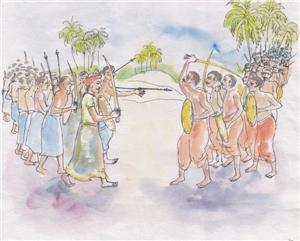
Purakkadu and Kayamkulam
After the death of Nizam, his son Nasir Jang became the new Nizam. But the grandson of the former Nizam Asaf Jah, Muzaffar Jang challenged it claiming that it was he who was recognised by the Mughal Emperor. In the meanwhile Chanda Sahib released from the custody of the Marathas put forth his claim over the Nawabship of Carnatic. The cunning Dupleix decided to support Muzaffar Jang and Chanda Sahib. With the help of the French the forces of Muzaffar Jang and Chanda Sahib defeated and killed Anwarudin at Ambur in 1749. The son of Anwarudin Muhammad Ali fled to Trichinopally but the French forces followed him there. The English on the other hand decided to help Muhammad Ali. And they requested Nazir Jang to confront the enemies at Carnatic. But immediately after his reaching at Carnatic the Nizam of Hyderabad Nazir Jang was killed as a result of which Musaffar Jang became the Nizam of Hyderabad. Later all the territories near Pondichery and Masulipatam were given away to the French and thus the French secured their foothold in Hyderabad. Before long Chanda Sahib became the Nawab and with this French had got their influence over Carnatic. Against this changed scenario the English moved cautiously. When Dupleix was entrenched himself in Carnatic affairs the English under the leadership of Robert Clive in 1751 attacked Arcot. Clive got more help from Madras and war continued for 53 days. Chanda Sahib then fled to Thanchavoor where he was killed. In 1753, when Muhammad Ali, the illegitimate son of the late ruler, became the Nawab, the French were in dire straits. Furious of this development the home authorities recalled Dupleix. His substitute, Godeheu, a director of the French East India Company signed a provisional treaty with the British by whose terms both nations agreed not to interfere further in the quarrels of native princesses. And thus the Second Carnatic war ended in favour of the English. The time to come would be a period most favourable to the British enabling them, at last, to establish an empire in India.
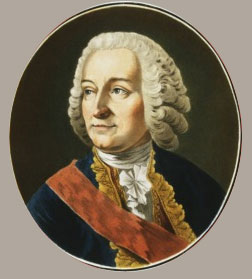
Purakkadu and Kayamkulam
The year in which the British and the French signed the treaty that saw the end of the second Carnatic war witnessed a great event in Kerala. It was the second Treaty of Mavelikkara (1753), as a result of which the Dutch power in Kerala started its decline. When the first Treaty of Mavelikkara (1743) was signed between the Dutch and Marthanda Varma the reasons behind its signing on the part of the Dutch were the problems at Batavia and the prohibitive cost involving in the maintenance of the empire there which ultimately led to paying no adequate attention to Kerala. But the treaty, strangely enough, empowered Marthanda Varma since making effective use of the terms of it he started attacking and annexing neighbouring countries. He, who maintained friendly ties with the English from the very beginning, started to entertain doubts with the arrival of Dupliex. Watching carefully who, the French or the English was going to be strengthened in India, he sent messengers to Dupliex informing him that he could raise a fort in Travancore. But with the second Carnatic war he made out the power of the English and was awaiting for an opportunity to interfere in Cochin.It was at that time, there took place Chazhoor mutiny in Cochin. In 1749 during the tenure of Rama Varma as the king of Cochin, members of Chazoor branch of royalty, called as Chazhoor Thampans (Lords of Chazhoor) started a mutiny clamouring for restoration of the title Perumpadamooppil. As the king rejected the restoration demand, the thampans sought the help of Marthanda Varma, who, seeing it as an opportunity to interfere in Cochin, seized the authority of the temple of Thiruvalla. And with this the problems became complicated. Though the Dutch officials tried to interfere, he did not yield. In1752 he led his forces towards Karappuram and the troops of Cochin fled away. Later the title of Perumpadappil Moopil was reinstated and the suzerainty of Karappuram was restored to Pazhoor Thampans who ruled over as the chieftains of the kings of Travancore.
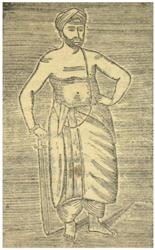
Dalawa of Travancore
Though the allies of the Dutch had felt bad towards it for its reluctance to lock horns with Travancore, there were many reasons for their reluctance. The rulers of Batavia estimated that even if he would be defeated in the war Marthanda Varma would continue his aggressions and it would be better to be friendly with him procuring obtainable pepper rather than warring with him whose total expenditure would be prohibitive. This forms the basis by which the second Treaty of Mavelikkara was signed. But it paved the way for the extinguishing of their dream to establish an empire in Kerala.
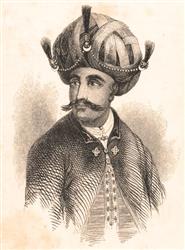
As per the terms of the agreement signed on 13 August 1753, the king of Travancore would have to give away 5000 Kandies of pepper. Of these the pepper to be procured at the areas of Travancore inclusive of Attingal should be 3000 Kandi with a cost of rupees 65 per Kandi, while the rest to be collected from the countries to be annexed by him in future should have a price of rupees 55 per Kandi. The terms of the treaty further made it obligatory for the king to provide facilities and protection to Dutch trade at Cape Comerin and Kulachal and it made the Dutch bound to give away to Travancore weapons worth rupees 12000. But the stipulation contained in the treaty enjoining upon the Dutch that they should keep away from countries likely to invade Travancore and should not entertain refugees from these countries became a threat to countries like Cochin. Though Cochin wrote a letter to the Governor General in regard to this, it was of no use. The kings and chieftains of north Kerala whose territories Marthanda Varma seized at different times mutinied against him in 1754, and it developed like that of a popular uprising. Though the king of Cochin was invited to lead the uprising the Dutch did not come forward to help them. The forces of Cochin and Travancore fought at Anandeswaram and the troops of Cochin scattered and fled. The commander- in-chief Idikkela Menon was killed. The troops led by Ramayyan Dalawa of Travancore reached Arurkutty and they were on their move to go ahead. By that time, Cochin requested for peace. In 1757 the two signed a peace treaty by which it was agreed upon that the people of the countries vanquished by Marthanda Varma would not be helped by Cochin and that Travancore would help Cochin to prevent invasions from the Zamorin. Thus Marthanda Varma was able to establish peace at the borders.
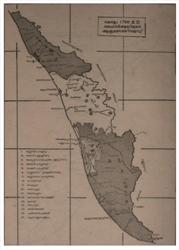
Hyderali
The Zamorin, making it out the state of Dutch, did not remain idle. He set into motion the movements of the troops to recapture Chettuva and Pappinivattom in 1755. Conquering many possessions of the Dutch, the Zamorin moved forward taking the possession of Paravoor, Thrichur Mullorkara and Kodungalloor. The Dutch were unable to block the Zamorin since its power was on the wane. Almost this period, Zamorin invaded Naduvattom coming under the territorial jurisdiction of the King of Palghat who in turn, sought the help of the King of Mysore to repulse the enemy. He deployed Hyder Ali, the Faujdar of Dindigal, to oppose the Zamorin. As Hyder Ali had engaged in some urgent activities he deployed his brother-in-law Mukudam Ali. Unable to withstand the combined onslaught the troops of Zamorin retreated and Zamorin agreed to give back the territories he annexed from the king of Palaghat besides agreeing to pay a war indemnity of rupees 12 lakh to Mysore. The events leading to the invasion of Hyder Ali, who became the ruler of Mysore, paved the way for far reaching changes.